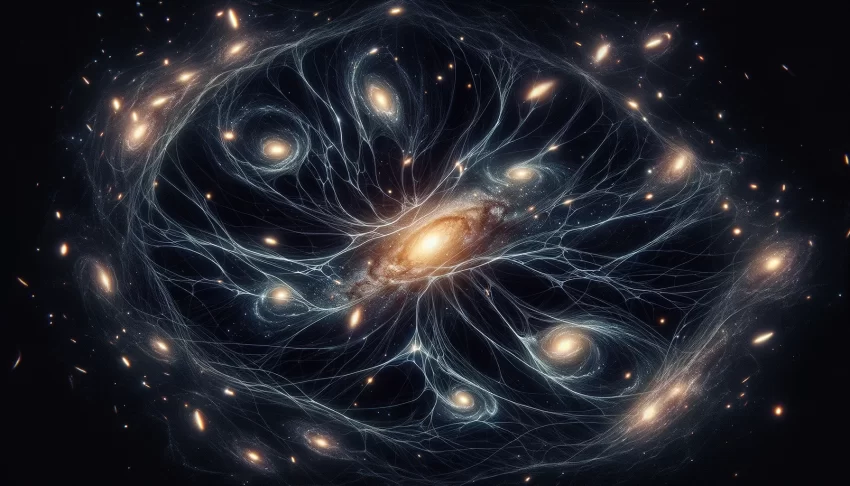| Listen to our audio presentation: HIstory of the Computer |
A groundbreaking study from the University of Ottawa has turned the astrophysical community on its head by suggesting that the universe may not contain dark matter, a fundamental component believed to make up about 27% of the cosmos. Published in The Astrophysical Journal, the research led by Professor Rajendra Gupta employs the covarying coupling constants (CCC) and “tired light” (TL) theories to propose a new model of the universe, the CCC+TL model, which negates the need for dark matter.
Dark matter, a substance that does not interact with light or electromagnetic fields, has been a cornerstone in understanding the cosmic behavior of galaxies, planets, and stars. However, Gupta’s model, which suggests that the forces of nature diminish over time and that light loses energy during its journey across the cosmos, aligns with various astronomical observations without relying on dark matter. These include the distribution of galaxies and the evolution of light from the early universe.
Gupta’s findings challenge the conventional model, which posits that the universe comprises mostly dark matter and dark energy, with ordinary matter making up less than 5%. The study also revisits the age of the universe, estimated at 26.7 billion years, and contends that the accelerated expansion of the universe, typically attributed to dark energy, is instead due to the weakening of cosmic forces.
Analyzing data on galaxy distribution and the sound horizon’s angular size at different redshift levels, Gupta asserts the superfluity of dark matter in explaining cosmological phenomena. His research stands distinct in the scientific dialogue, claiming to be the first to eliminate the cosmological need for dark matter while being consistent with established observational data.
The concept of dark matter originated in the early 20th century when astronomer Jan Oort and others observed discrepancies in the gravitational behavior of galaxies and stars, suggesting the presence of unseen mass. The term “dark matter” was coined later, signifying a mysterious substance influencing galaxy formation and movement. Over the decades, various experiments and observations have sought to detect dark matter directly or indirectly, with none conclusively proving its existence. Gupta’s research not only challenges the longstanding hypothesis of dark matter but also encourages a reevaluation of fundamental cosmological theories, urging scientists to explore alternative explanations for the universe’s mysteries.

